How Should I Paint My Basement Cinder Block Wall
Thinking of painting cinder block walls in your basement? This procedure works for both unpainted blocks or if you want to repaint your cinder block walls.
A basement is a valuable space in whatever dwelling house, with its year-round cool climate and piece of cake admission from both indoors and outdoors.
But whether y'all use it as storage for your excess pantry items or as a family unit hangout, you need to maintain information technology regularly to prevent moisture damage.
Your basement will either take a concrete foundation or cinder block foundation. By painting the walls or foundation, y'all increment the appeal of the infinite, just also it improves the moisture control from the wall.
Physical is a porous material that tin can absorb water from the basis and transfer to the basement through the foundation. By using a waterproofing paint, you prevent some of this transfer from happening.
Let me share how to paint cinder cake walls in a basement or concrete to aid you waterproof your basement.

This tutorial is for a cinder cake foundation because this is the blazon of walls we accept in our basement, but this works for a concrete wall too. Likewise, our walls were painted earlier, but they were starting to flake, and nosotros wanted to make sure they were waterproofed before finishing the space.
Disclosure: This post contains some affiliate links or referral links for your convenience. Information technology is a style for this site to earn advertising commissions by advertising or linking to sure products and/or services, click here to read my total disclosure policy .
STEP 1 – How to prepare a cinder block wall for painting
With every projection, there is always prep piece of work, and this is an essential step to requite you the finish y'all want. Just before starting, I put on my mask and glasses – safety start!
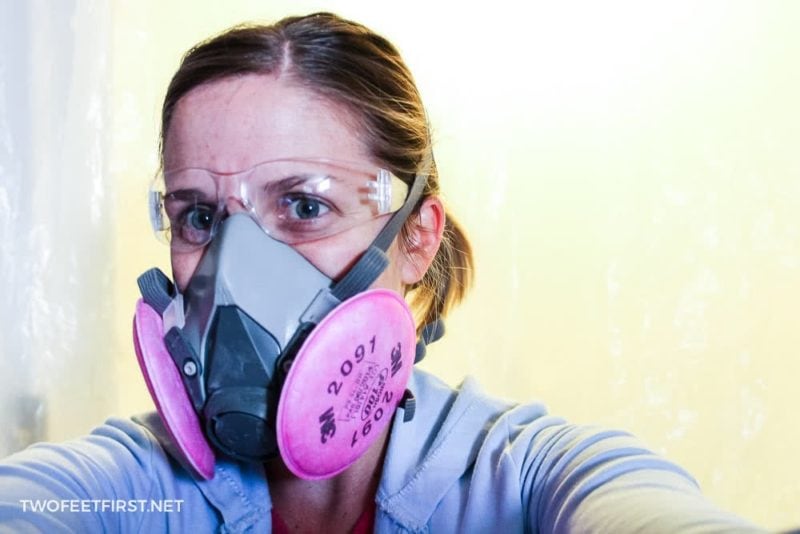
Starting time past scraping off all dirt, loose grit in cracks, and (if you're repainting), the onetime flaking paint, with a painter's tool and a wire castor. Utilize a shop-vac to vacuum upwards the scraped off material.

After, you volition use hydraulic cement to patch whatever holes or cracks where h2o could seep in. Follow the instructions for the hydraulic cement, or if you want some actress assistance, run into how to waterproof cracks in a foundation.

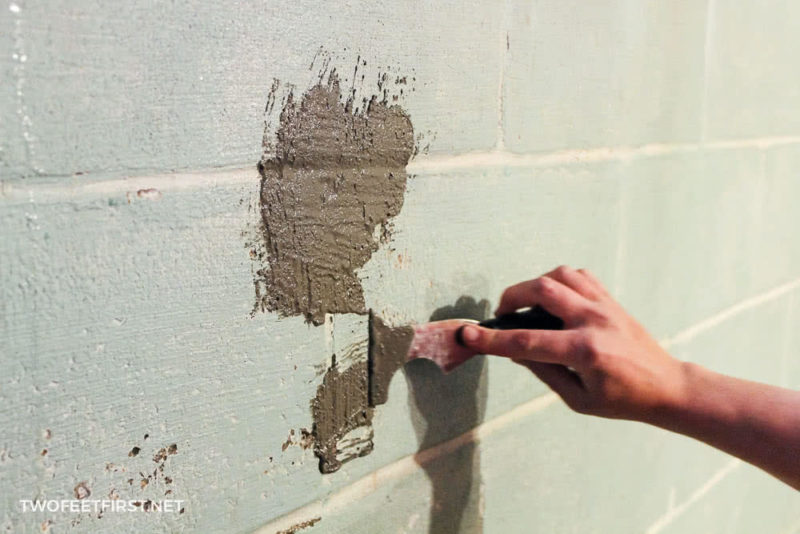
In one case the cement has dried, it's time to clean the walls. Utilise a shop-vac once more to vacuum up any loose materials.
Make sure to remove Efflorescence (a white, powdery, crystal-like deposit) by using Drylok Etch or muriatic acid to clean the area. Follow the manufacturer's directions.
Then, using a mild detergent, clean the walls to remove any extra dirt or residue.
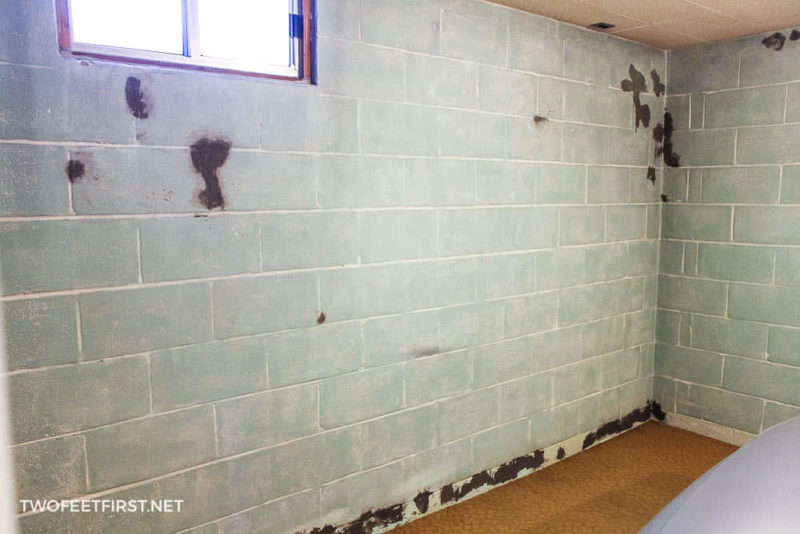
STEP 2 – Paint cinder block with paint
Now you're ready for paint! Choose carefully considering the type of paint you utilise will make a difference in waterproofing your walls. I have used 2 different types and I would recommend using Drylok.
SIDE Notation: Drylok is tint-able, so you can color information technology!
Use the paint according to the manufacturer'due south instructions, just here are some basic guidelines.
Stir the pigment thoroughly before and during painting.
TIP: Use a drop textile to protect the floor from paint.
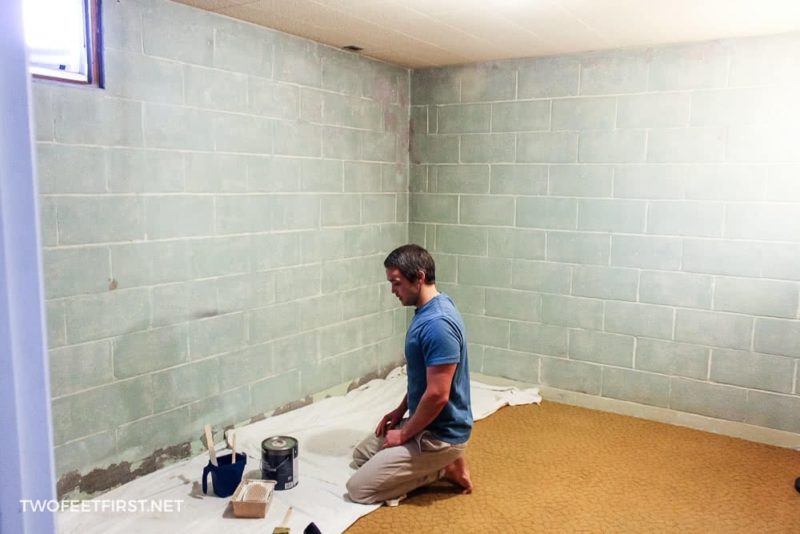
Apply the showtime glaze of paint by cutting in effectually the edges of the wall with a paintbrush and also betwixt each articulation of the cinder block. Yous desire to paint the joints with a paintbrush because it is challenging to paint with a roller, and every pore of the cinder block needs to be covered.
SIDE NOTE: You could paint the whole wall with a paintbrush if you are worried about filling in each pore.

Next, use a high-quality i/two″ to 3/4″ nap roller to paint the residuum of the wall with paint. Again, you want to make full every pore and void on the wall'south surface with paint, so check that this is happening equally you roll on the paint.
Allow the paint dry out according to its instructions. Then, you tin can apply a 2d coat the same way as the showtime glaze (with a roller). Make certain you are covering any pores y'all missed with the first coat.
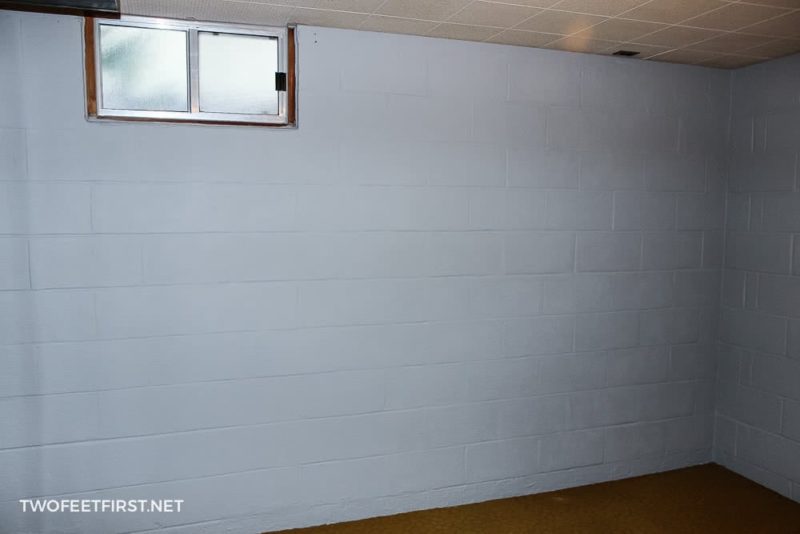
Allow the 2nd (and final) coat to dry out; then, confirm that the pores are each painted. If you happen to miss some, use a paintbrush to encompass these areas; then, allow information technology dry.

And that's how yous tin paint (and waterproof) your cinder block interior walls.
Interested in more
- The procedure of finishing a basement
- Insulating and framing a basement
- The process of enlarging basement windows
- The process of installing window wells for basement
Source: https://www.twofeetfirst.net/re-painting-cinder-block-walls/
Posted by: gardnerthems1979.blogspot.com


0 Response to "How Should I Paint My Basement Cinder Block Wall"
Post a Comment